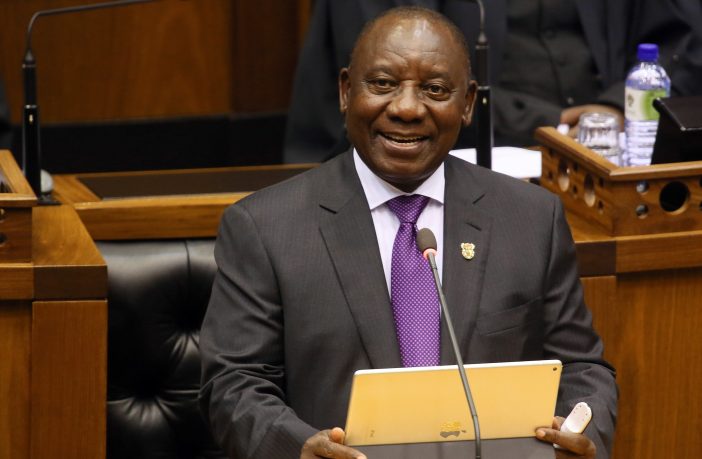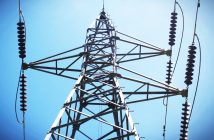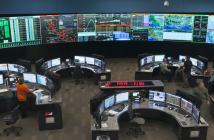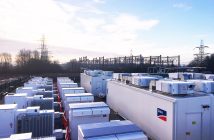Opinion
- Since becoming president in 2018, Cyril Ramaphosa has repeated his vision of building a new smart city for the people of South Africa in the annual State of the Nation Address (SONA).
- He said the idea was sparked by a conversation he had with several people including Chinese President Xi Jinping, local government Minister Nkosazana Dlamini-Zuma, International Relations Minister Naledi Pandor and ANC deputy secretary Jessie Duarte.
- On each SONA occasion, his announcement was met with jeers and laughter from opposition party benches.
- I think it’s a great idea but build it in coal country, not Lanseria.
Cyril Ramaphosa’s state of the nation address in February 2020 expanded on his previous announcements of his intention to build a smart city for the people of South Africa:
“Last year, I asked the nation to join me in imagining a new smart-city, a truly post-apartheid city that would rise to change the social and economic apartheid spatial architecture. A new smart-city is taking shape in Lanseria, which 350,000 to 500,000 people will call home within the next decade.
The process is being led by the Investment and Infrastructure Office in the Presidency alongside the provincial governments of Gauteng and North West, working together with the cities of Johannesburg, Tshwane and Madibeng. Working with development finance institutions we have put together an innovative process that will fund the bulk sewerage, electricity, water, digital infrastructure and roads that will be the foundation of the new city.
It will not only be smart and 5G ready but will be a leading benchmark for green infrastructure continental and internationally.” Link to 2020 SONA address here
While most saw the South African president’s announcement of building a smart city as ‘detached’ and farfetched considering the dire state of the South African economy and its ongoing challenges regarding inequality and equal opportunity, some like me saw it as a beacon of hope coming from a leader who is confident that the country will overcome its current problems and rise to the challenge of building a smart city as a symbol of nationalism and prosperity.
I truly believe it is not only possible but necessary to readdress the ills of the entrenched apartheid styled urban landscapes that exist in South Africa to this day. The smart city model ticks many boxes relevant to the South African socio-economic and environmental challenges.
For one, the initiative will bring direct foreign investment and secondly, it will bring the construction industry back from the brink of collapse. Most importantly it will showcase a new way of city living in Africa, one that embraces the ‘smart’ concept and functions on equal accessibility and affordability so that its citizens can flourish.
Related news: Smart cities are under development in Senegal, Kenya and Zimbabwe
For me, the most obvious place to build it is in coal country – Mpumalanga. The Provence is home to a cluster of 12 coal-fired power stations which are showing their age, some are in the process of decommissioning. The area around eMalahleni (previously known as Witbank) in particular has the highest density of carbon emissions in the world and the worlds dirtiest air.
As South Africa grapples with transitioning out of coal-fired energy to renewables, a smart city in Mpumalanga will address the challenge of job and skills transfer from the coal industry to additional sectors other than renewables.
Flash: According to stats SA, just over four million people reside in Mpumalanga and the current unemployment rate in the province is 33.3%
The urban planning and spatial legacy of apartheid are obliterated by the smart city concept. The traditional silos of municipal governance are removed. Technologies, platforms, ecosystems and processes coexist in a way that their sum is greater than the individual parts. In this way, everyone is given the same opportunities, there are equal access and the rich rub shoulders with the poor in everyday life.
About smart cities
- The fourth industrial revolution is the cornerstone of the smart city model. The boundaries are collapsed between the physical, digital and biological spheres in the urban environment. All systems and processes are digitised in a smart city. Artificial Intelligence is at the forefront of this reality.
- This theme is carried throughout the value chain. Everything is managed in real-time, from the design and construction stage to the operation and maintenance. Things like public lighting are all remotely controlled and run like clockwork.
- A smart city is net carbon zero and runs on sustainable energy that is used efficiently. Energy is produced through renewable resources at all opportunities including roads and buildings. Generation technologies include hydrogen, geothermal, natural gas, solar, wind and biogas power run smart cities.
- Smart cities focus on people movement and attempt to maximize efficiencies in doing so. A smart city has a well-designed road and rail network that can accommodate autonomous vehicles and the latest in electric and hydrogen vehicle technology. The associated charging network is accessible, affordable and integrated into the mass transit system.
- Zero crime, people are safe in smart cities because big brother is watching in the public space. Smart cities rely on constant connectivity to volumes of data from stationary and moving sensors which is transformed into useful information using data analytics to provide a better and safer quality of life.
- Water security is ensured through managed supply from natural resources, recycling from sewerage and harvesting at residential and commercial level. Everyone using water is a part of a ‘real-time’ managed, smart meter ecosystem. Water sensors measure flow rates at different points in the water network to detect leakages plus monitor consumption. Sensors monitor water quality issues including pH, dissolved oxygen and turbidity in the network.
- Universal high-speed internet and data for all, regardless of income.
- The urban planning landscape adapts to the contemporary urban context. An ongoing balance is kept between the number of residents, the built environment and the jobs available.
So when you put it all together, the smart city model makes perfect sense for South Africa. It offers a fresh start and a means to finally rid the country of the shackles of apartheid spatial planning. The country needs more than one smart city but Mr President, please build the first one in Mpumalanga not Lanseria. Your will tick more boxes in Mpumalanga.
Author: Bryan Groenendaal
Bryan is the founder and editor of Green Building Africa. He is also a high-performance building specialist, sustainable urban planner and renewable energy project developer.












2 Comments
I would like to know what is the value chain of this smart city as I am busy with an assignment with regards to this smart city project.
Ask Dr Wells 🤣🤣